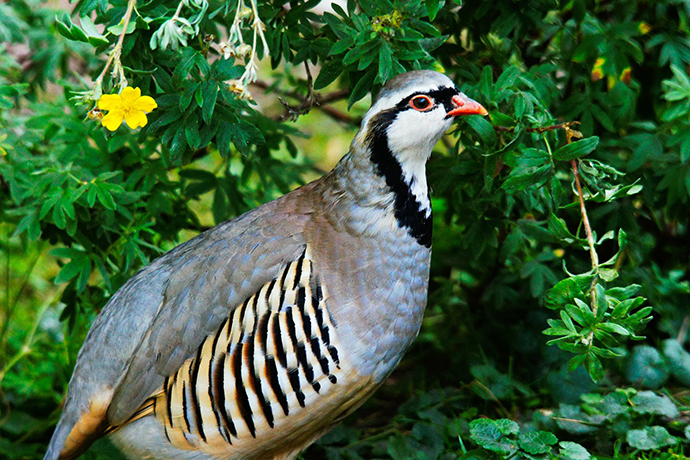12 Days of Christmas Produce Large Quantities of Fertilizer
 On the first day of Christmas, your true love gives to you – a partridge in a pear tree.
On the first day of Christmas, your true love gives to you – a partridge in a pear tree.
Great. Thanks. But who’s going to clean up after it?
According to Dean Miner, Utah State University Extension professor, there’s no sense in letting it go to waste.
“When considering the value of the gifts received during the 12 days of Christmas, observers often overlook the fertilizer value of the manure produced by the continually accumulating animal gifts,” he said.
They are the gifts that keep on giving.
And how much fertilizer do partridges, turtledoves, French hens, calling birds, geese, swans and cows provide over a 12-day period?
Total manure production is 16,173.7 pounds. That’s more than 8 tons. Of this amount, 20.5 percent comes from the fowl and the remaining 79.5 percent from the dairy cows, Miner said.
This is enough nitrogen to meet the average needs of 24 residential yards, assuming that each residence receives 4 pounds of nitrogen per 1,000 square feet with 4,500 square feet of lawns and home gardens.
You arrive at these numbers by adding up the animals that are accumulated at the end of 12 days after your true love is finished giving.
For example, on the second day of Christmas your true love gives to you two turtledoves and yet another partridge in a pear tree. That means you have accumulated two partridges and two turtledoves in just two days. You keep going down the list and you see how quickly it all adds up.
Miner calls this “accumulated critter days.” Here is how it adds up.
Accumulated critter days: 78 partridges, 132 turtledoves, 165 French hens, 180 calling birds, 168 geese-a-laying, 147 swans-a-swimming and 120 cows (not counting the maids-a-milking).
As pointed out, the maids-a-milking do not count because they do not fall under the winged or four-legged variety of gifts. Miner said they are considered “non-producing gifts.” The same holds true for the drumming drummers, leaping lords and piping pipers.
If you multiply the partridge’s 78 accumulated critter days by their average weight of 4 pounds, you arrive at 312 pounds of accumulated weight days.
When you multiply 312 by .225, which is the fresh manure production factor, you arrive at 70.2 pounds of fresh manure that your partridges have produced for you over those 12 days of Christmas.
“Of course, the fresh manure production factor assumes that poultry eat 5 percent of body weight per day, of which 90 percent passes through as waste at 20 percent dry matter,” Miner said.
Turtledoves, assuming an average weight of one-half pound, produce 14.85 pounds of manure. French hens, averaging 5 pounds, produce 185.65 pounds of fertilizer. Calling birds, at 1 pound average weight, produce up to 40.5 pounds of manure. The geese, with an average weight of 30 pounds, yield 1,134 pounds of manure. The swans, at 60 pounds, produce up to 1,984.5 pounds of fresh manure. The cows, with an average weight of 1,350 pounds, bring in a whopping 13,284 pounds of pure sunshine.
Miner said typical poultry manure is 4.3 percent nitrogen, 1.6 percent phosphorus and 1.6 percent potassium. Fresh cow manure averages 2.2 percent nitrogen, 1.3 percent phosphorus and 0.8 percent potassium. This provides a total fertilizer yield of 439.63 pounds of nitrogen; 227.5 pounds of phosphorus and 161.1 pounds of potassium.
Not bad for just 12 days of Christmas. But what about after that?
“Don’t ask,” Miner said.
Contact: Dean Miner, dean.miner@usu.edu, 801-851-8469


 Utah 4-H & Youth
Utah 4-H & Youth